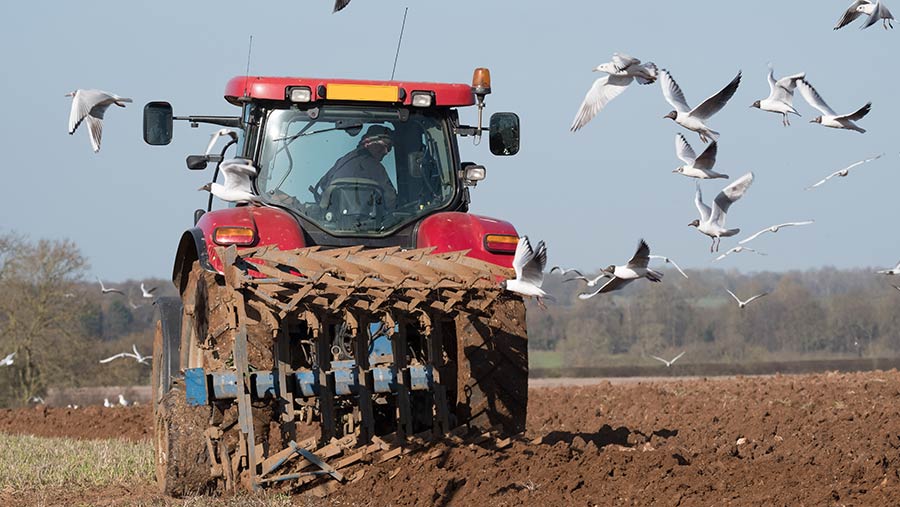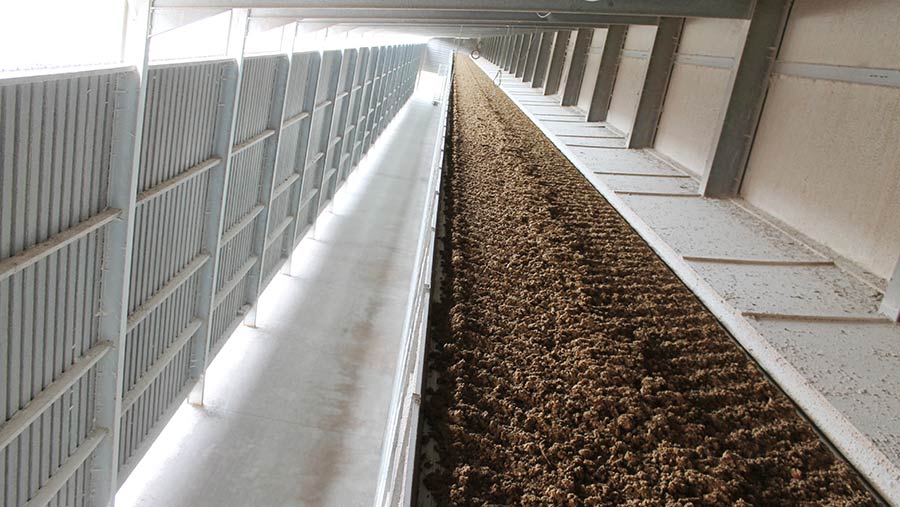4 alternatives to spreading poultry manure on land
 © Tim Scrivener
© Tim Scrivener Poultry farmers are increasingly looking at practical uses for poultry manure to future-proof their businesses and achieve additional income.
The amount and timing of spreading on land – the most common way manure is dealt with – is already governed by nitrate vulnerable zone (NVZs) rules and environmental permitting, and these controls will be further refined by Defra’s 2018 Farming Rules for Water and this year’s government Clean Air Strategy.
This means poultry farmers may need to take on more land – which would add cost – or find other ways to add value to the manure.
See also: How to control smells on poultry farms
A report prepared by Adas consultant Jason Gittins for the British Free-Range Egg Producers’ Association (Bfrepa) advises on reducing the dry matter (DM) content of poultry manure spread on land to increase both its financial and nutrient value (see tables below).
“At 50% manure dry matter content, the value is likely to be between £20/t and £26/t, according to application time and method,” Mr Gittins says. “But at 80% dry matter, the value rises to £41/t.”
These prices reflect the value of the nutrients in the manure, although drier manure also reduces transport costs.
Table 1: Typical nutrient content of poultry manure (kg/t) |
|||||
| Dry matter (%) | Nitrogen | Phosphate | Potash | Sulphur | Magnesium |
| 20 | 9.4 | 8 | 8.5 | 3 | 2.7 |
| 40 | 19 | 12 | 15 | 5.6 | 4.3 |
| 60 | 28 | 17 | 21 | 8.2 | 5.9 |
| 80 | 37 | 21 | 27 | 11 | 7.5 |
| Source: AHDB | |||||
Table 2: Nutrient value of laying hen manure (£/t) |
||||
| Dry matter (%) | Nitrogen | Phosphate | Potash | Total |
| 20 | 5 | 6 | 4 | 15 |
| 40 | 8 | 9 | 7 | 24 |
| 60 | 11 | 12 | 10 | 33 |
| 80 | 14 | 15 | 12 | 41 |
| Source: Adas | ||||
To maximise the nutrient availability, the report recommends:
- Keep manure covered and dry to minimise ammonia loss
- Apply in the spring to reduce leaching
- Incorporate quickly to avoid ammonia loss
- Use soil analysis to target P and K to where they are needed
- Assess crop nutrient requirement.
While land spreading is the norm for most free-range egg producers, there are alternatives and the report examines four of them.
1. Incineration
Once dried (to at least 55% DM), poultry manure can be burned using a fluidised bed incineration system, producing heat for use on farm through hot water systems, or to generate electricity through a combined heat and power (CHP) system.
Pros Income can be generated from Feed-in Tariffs and the Renewable Heat Incentive, and from the sale of electricity, put at about £600 per 1,000 birds.
The ash by-product also has a relatively high saleable value of about £40/t. The heat generated can be used warm the sheds, reducing feed demand, drying litter and lowering ammonia levels.
Cons High capital costs – estimated at £1.3m without CHP and £2m with CHP. There is also a high degree of regulation, and planning may cost another £40,000.
Litter burning is therefore an economic option only for the largest farmers (usually in the broiler sector), although there may be scope for smaller farmers to group together and invest in this area.
2. Drying and pelleting
Warm air is extracted from the poultry shed and blown over the manure on perforated belts (some systems use heat from alternative sources such as AD plants or incinerators).
The drying process takes 48 hours to reach a DM content of 80-90%. Once dried, the manure can be crushed and pelletised.

Drying manure increases its nutrient levels and financial value
Pros Drier manure has a higher nutrient and financial value, and is easier to handle. Pelleted manure sells for 80p/kg at retail in the UK.
Drying also reduces ammonia emissions, resulting in less odour and fewer fly problems. It works well with multi-tier housing, since the manure will be on belts anyway.
Small-scale drying systems are available, suitable for flocks of just 12,000 birds.
Cons Relatively high capital cost – £80,000 might be needed for a 32,000-bird unit.
Pelleting systems are even more expensive to install at about £4 a hen, or £256,000 for a flock of 64,000 birds.
An air temperature of 15-20C is needed for drying, which might be hard to achieve in some layer sheds in winter. Retrofitting might also be problematic.
3. Composting
Poultry manure can be composted in combination with carbon-rich raw materials such as green waste, straw or wood.
Composting can be undertaken outdoors on a concrete base or in an existing building, although best results come from contained (so called “in-vessel”) systems.
Pros Composting can be relatively cheap, especially if done in heaps on existing hardstanding. Income can be earned from a “gate fee” for incoming green waste, which can be as high as £90/t although £25/t is more likely.
With a high N content, the compost should exceed the 70% threshold, so it can be spread in NVZs during the closed season.
Cons The material needs to be agitated weekly, which can be labour intensive. If the material is too wet, it can struggle to compost and becomes odorous.
The value of the end product is low – about £5/t, although higher in arable areas.
If concrete has to be laid, that pushes up the capital cost by £40/sq m. In-vessel systems are even more expensive, at £150/t of material composted annually. Dirty water is another consideration.
4. Anaerobic digestion
Organic wastes such as food, crops and manure are fermented in anaerobic conditions to produce gas, which is used for energy generation. The remaining digestate is a nutrient-rich fertiliser.
Pros Income from the sale of gas or electricity is an option, with taxpayer support also available.
The digestate has some value, though is typically low in nutrient content. The biogas may be useful on site for heating and drying.
Cons High nitrogen in poultry manure, which affects microbial activity, normally limits its inclusion to 20%, while grit in the faeces can exclude it altogether.
Storage of both solid and liquid digestate can be expensive. Gas may need to be cleaned before entering the National Grid. Capital investment typically ranges from £1.4m-£2.5m.
Key points
- As the laws around land spreading get tighter, so alternative uses of manure will grow in significance
- Incineration and AD are too expensive for all but the very largest producers
- Manure drying and composting may be more economic
- Collaboration may provide the key to utilising manure at a central site
- Help with capital costs may be forthcoming from the Clean Air Strategy.
The rules on spreading poultry manure
Farming Rules for Water
- Spread manures must not exceed soil and crop nutrient needs
- Soil analysis must be undertaken every five years
- Manures must not be stored within 10m of inland fresh water (or 50m of a borehole)
- Manures must not be applied if soil is waterlogged, frozen or snow covered
Clean Air Strategy (regulations pending)
- Solid manure spread on land will need to be incorporated within 12 hours
- Building design will need to minimise gaseous emissions.
